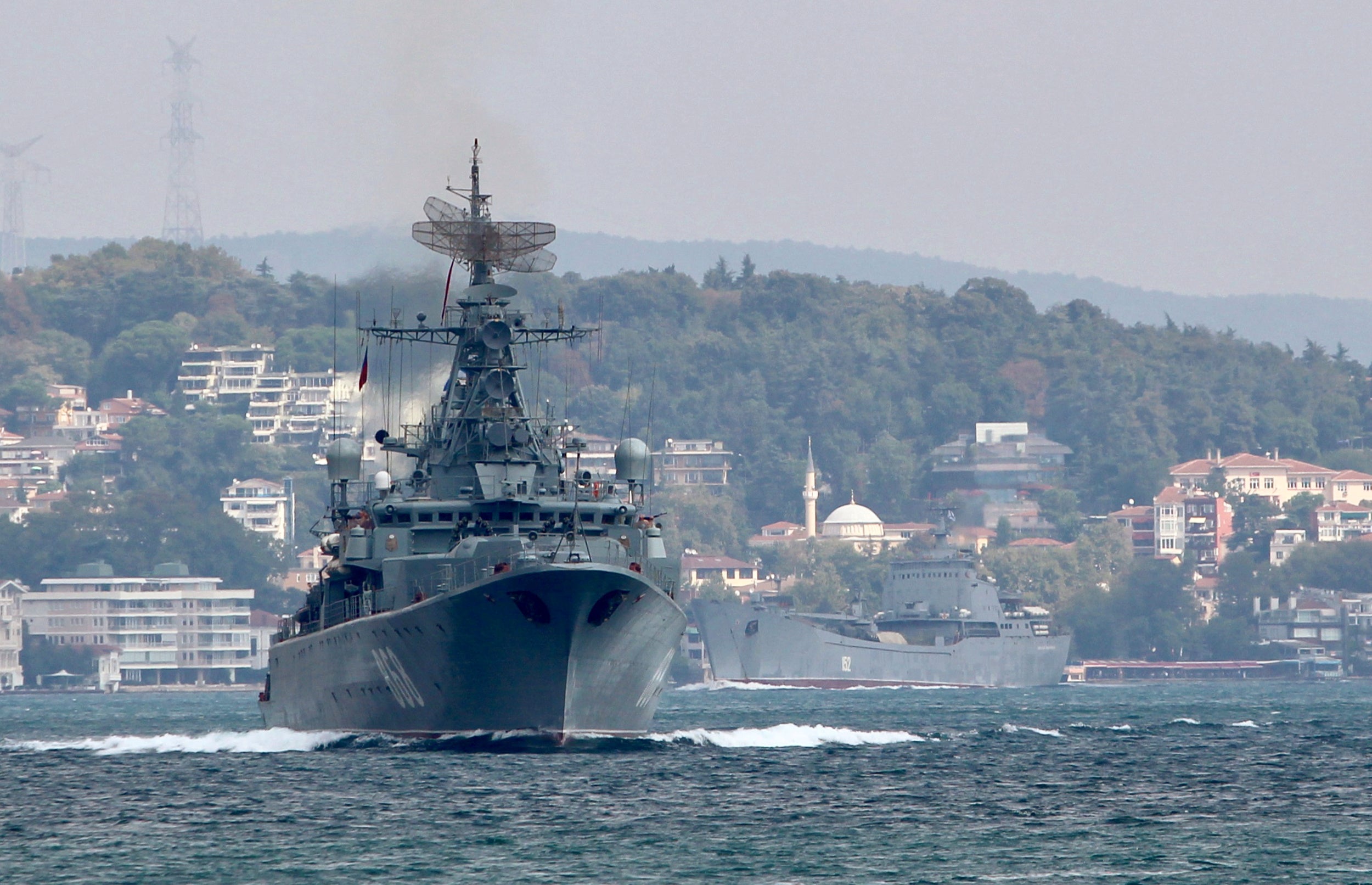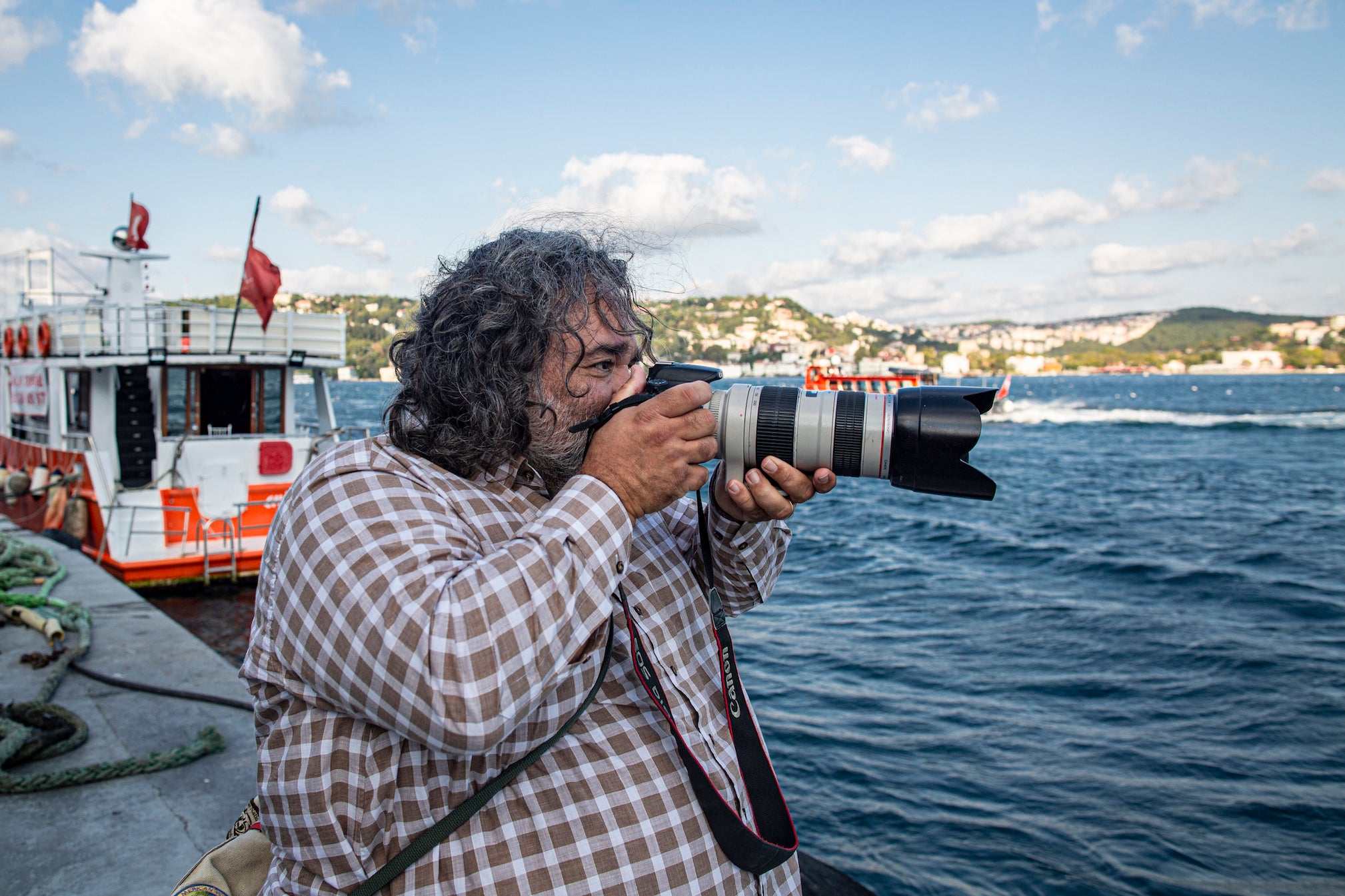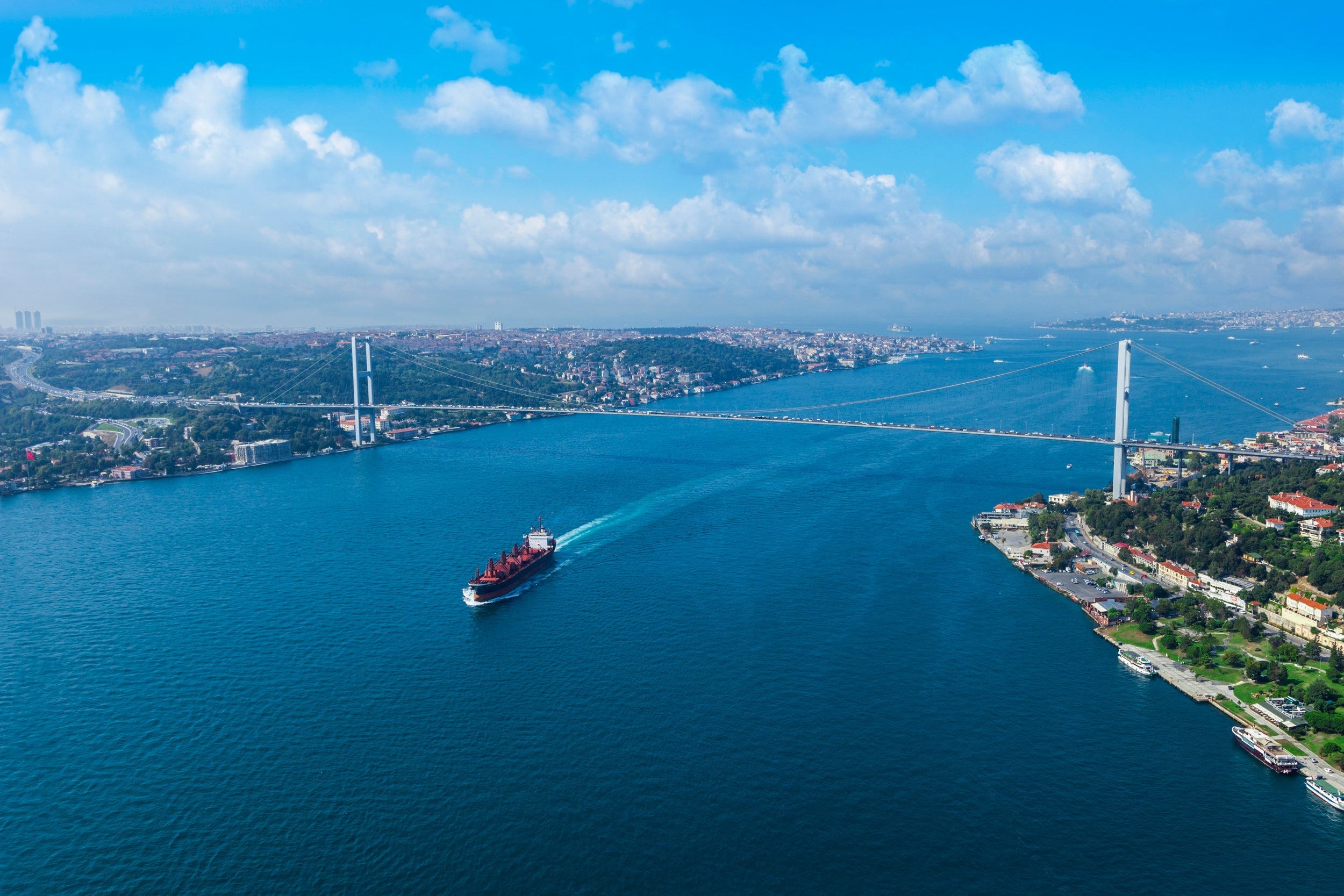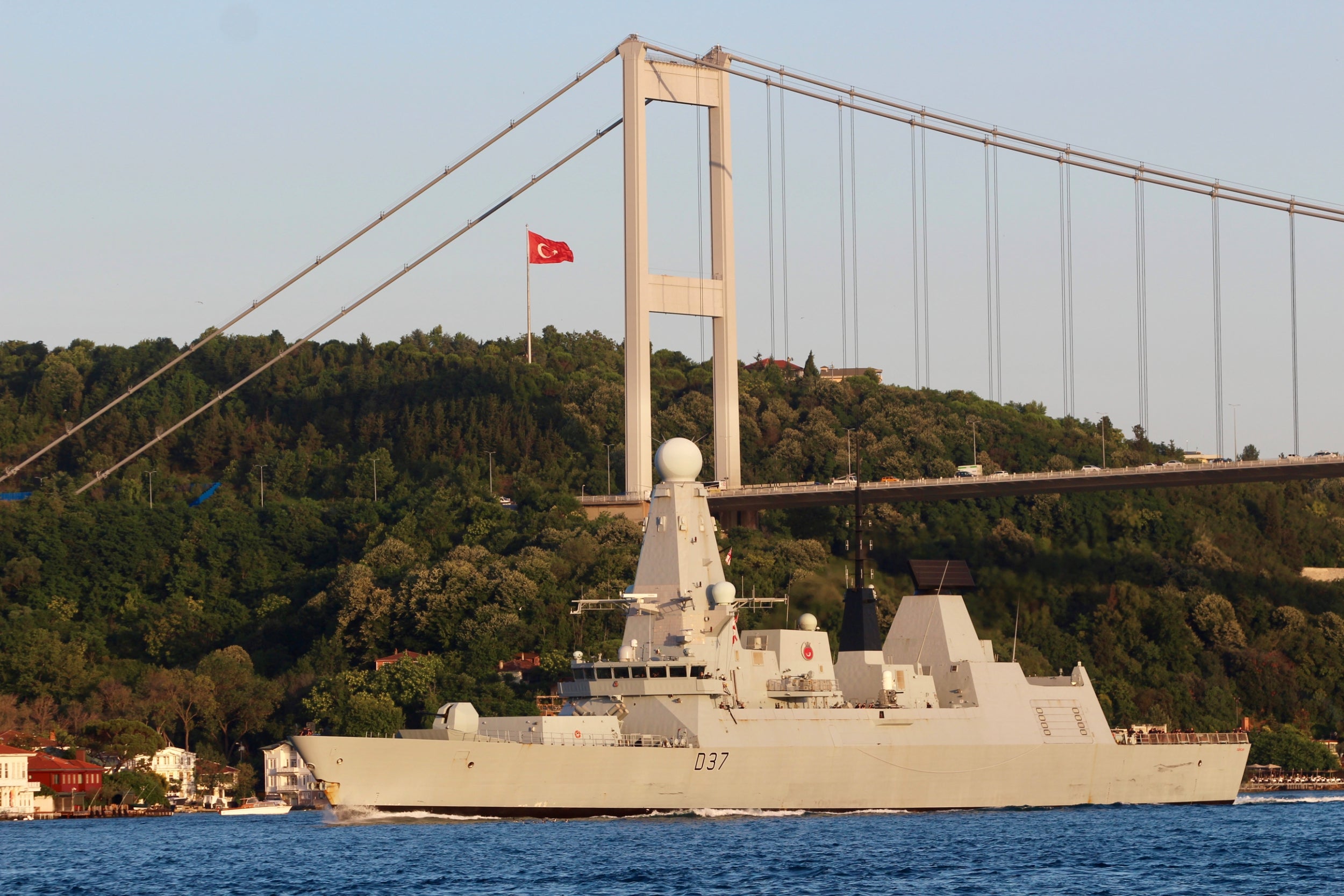In search of secrets and broader truths along the Bosphorus Strait
There are many things to be discovered along the Bosphorus – Russian warships among them. Borzou Daragahi joins camera-ready sleuthers determined to uncover government conspiracies along its waters


It is just after 7am on a crisp late-summer morning, and we are driving southbound on Kennedy Avenue, the road along the Strait of Bosphorus adjacent to Istanbul’s Topkapi Palace and some of the city’s most famous historic sites. Yoruk Isik spots something out of the corner of his eye that makes him abruptly change course.
The Russian warship that he and his informal network of spotters further south in the Sea of Marmara and Cannakale had been tracking and which had left the Syrian port of Tartus, where Russia has built a naval base, days earlier had showed up sooner than he had expected. Suddenly, our leisurely morning drive turns into a mad dash, through Istanbul traffic, back across the Golden Horn and north along the Bosphorus. The aim: set up a vantage point to get a clear shot of the warship as it makes its way through the waterway.
“You’re getting the real sport of it,” Isik, a 49-year-old political scientist and blogger also known as the Bosphorus Observer, tells me. “First of all, you have to be ready to deal with Istanbul traffic.”
Isik has spent years watching and photographing war and merchant ships sail through the storied waterway. He has refined various techniques not only to find perfect locales to use his high-powered Canon camera to photograph ships, but also sort through vessel-tracking websites and news articles to identify where a ship has been, hypothesise about what cargo it might be carrying, and rummage through past ports of call to speculate about where it might be headed.
What he has discovered is a clandestine realm where Russian merchant ships try to discreetly move weapons from the Black Sea ports to ports controlled by Bashar al-Assad in Syria, while commercial vessels loaded with weapons made by Bulgarian arms manufacturers head to Yemen.

It is a space where Arleigh-Class US destroyers, driven by policymakers in Washington worried by Russian advances, have increased patrols in the Black Sea, occasionally with UK and French boats accompanying them, making port visits to Balkan Nato partners in Romania and Bulgaria. “Major arms traffic comes through the Bosphorus,” Isik says, as we make our way through traffic. “You see warships, and they’re glorious to see, but they’re an extension of diplomacy. You don’t have battleship conflicts on the open sea.”
You could call him “Bellingcat of the Bosphorus’’ – a reference to the open-source intelligence vanguards who’ve made a name for themselves uncovering the secrets of world governments using publicly available information. “All you need is a car and time in your daily schedule to do this,” he says. “Daytime or nighttime. You can do ship-spotting anytime you want.”
The Strait of Bosphorus is the only passage from the Black Sea to the rest of the world, slicing through what geographers consider the border between Asia and Europe
We finally make our way through Istanbul’s gnarled tangle of roadways to one of Isik’s favourite vantage points. It is a strip of park along the Bosphorus at Kireçburnu, near Istanbul’s leafy Tarabya district, which gives us a head-on view of oncoming ship traffic. He begins snapping photographs of the ship, a Russian Ropucha class landing ship, as it sails north toward us, following the bend of the Bosphorus.
“Depending on the time of the day or season, I have different vantage points,” he says. “Where the Bosphorus curves and is very narrow are the best places to photograph. Ships are very close to the coast at that point – perhaps 250 metres – and proceed slowly against the current.”
He sometimes boards one of Istanbul’s ferry boats that crisscross the 20-mile length of the Bosphorus to photograph ships.
Isik, rotund and bearded with a red Renault Clio filled with detritus, has a day job. He works as a risk management consultant focusing on Turkey, Central Asia and Russia. In his free time, however, he has refashioned open-source sleuthing into a rather glamorous lifestyle. Most open-source investigators sit hunched over computers, perhaps sorting through social media posts in hopes of geolocating a bomb site or identifying a Russian secret operative.
Isik’s mornings are often spent gazing out at Istanbul’s most majestic scenery of hills and bluffs, now crowded with skyscrapers enjoying the Bosphorus breeze, with a cup of Starbucks coffee at his side. He leads an informal network of a dozen or so other ship-spotters, who get photos of ships he misses, or get better angles. “Anyone with a basic camera can contribute,” he says.
We speak about the Bosphorus during a leisurely chat over coffee after our morning of ship-spotting, and in subsequent exchanges over the phone. On one recent Tuesday, he had spotted a freighter en route from Yemen to Ukraine and another en route from Syria to Romania. A day earlier, he spotted a Russian-flagged cargo ship supposedly en route from the Russian-controlled port in Crimea to Lebanon, but noted that the ship had previously gone to eastern Libya.
We are surrounded by Russia. I have always loved since I was a student to try to figure out Russia. It’s like solving a puzzle
The day before that he spotted a Russian ship en route from Istanbul to Russian-controlled Crimea, carrying ilmenite, an imported mineral for creating titanium oxide pigment. The same day he photographed a bulk carrier heading from Ukraine to the eastern Libyan city of Benghazi. The Strait of Bosphorus is the only passage from the Black Sea to the rest of the world, slicing through what geographers consider the border between Asia and Europe.
Over the centuries many empires have sought to master it. The Persian King Darius built a bridge over it by connecting boats. Ottomans built fortresses in the 14th and 15th centuries, so as to collect taxes on Black Sea Trade. Russia built a military base on the strait in 1833 to prevent an invasion by Egypt’s then ruler.
On the 13 November 1918, dozens of allied ships arrived at the mouth of the waterway, invading Istanbul before they were repelled years later by the forces of modern Turkey’s founder Mustafa Kemal Ataturk.
Modern-day Istanbul, a sprawling metropolis of 16 million people, straddles both sides of the waterway, and Turkey officially controls the strait. But ever since the 1809 Treaty of Dardanelles, civilian ships and warships during times of peace are granted unfettered access. Isik says an early fascination with Russia prompted him to track its ships as they made their way from Black Sea ports past his city. “We are surrounded by Russia,” he says. “I have always loved since I was a student to try to figure out Russia. It’s like solving a puzzle.”

But in recent years, he says, the Bosphorus has become a transit point for other actors, and his interests have expanded. Saudi Arabia and the United Arab Emirates, in particular, have been using the strait to transport weapons on to battlefields in Syria, Yemen and Libya. They don’t always advertise their cargo, but travel patterns strongly suggest a ship out of Burgas heading repeatedly back and forth to Jeddah is not carrying potato exports.
“They try to keep things hidden,” says Isik. “What I think is really interesting is that more and more civilian ships are being used for military purposes, and not just Russians.”
In recent months, Isik has seen a Danish-owned Carribean merchant leaving a Bulgarian port heading to the Gulf. It repeatedly ended up in Jeddah, on the Saudi coast. But once, it went to a Red Sea port in Egypt. His speculation: it was loaded with weapons bound for Libyan warlord Khalifa Haftar, a protege of Egyptian strongman Abdel-Fattah el-Sisi. Last year, as Russian foreign minister Sergei Lavrov announced Moscow would be aiding the embattled government of Nicolas Maduro in Venezuela, Isik detected ships full of Ukrainian wheat heading from Russian-controlled ports in the Crimea toward Caracas.
Other ship-spotters sometimes report on what vessels are carrying. But whenever he can, Isik digs through insurance documents and coastguard reports available online. He’s also cultivated sources in the maritime industry who offer up tips and insights. Most ships operate on terrestrial VHF networks, so they can be tracked electronically when they’re close to shore, but once out on the open seas they are impossible to follow. Military ships can’t be tracked by civilians, and don’t show up on monitoring services. The Turkish Coast Guard escorts military ships through the Bosphorus to “make sure they leave,” says Isik.

What he’s witnessing is in part a rejuvenation of the Eurasian landmass, specifically around the Black Sea. Once considered one of the world’s most moribund corners, the body of water it is reemerging as a vital node in the world’s power plays. “I am aware and have a direct memory of the transformation of the Black Sea into a more international body of water in my lifetime,” he says.
“In my childhood the Black Sea was the end of the road,” he says. “You couldn’t even visit the other side. Now with the opening of Russia, there’s a huge market there. The merchant traffic has greatly expanded since my childhood. Seeing this transformation is exciting for me.”
Join our commenting forum
Join thought-provoking conversations, follow other Independent readers and see their replies
Comments